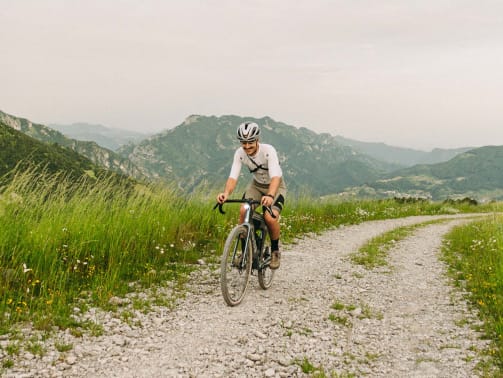How to choose the right bikepacking bike: A complete buying guide
Make bikepacking adventures as easy and fun as possible with the best bikes and kit.
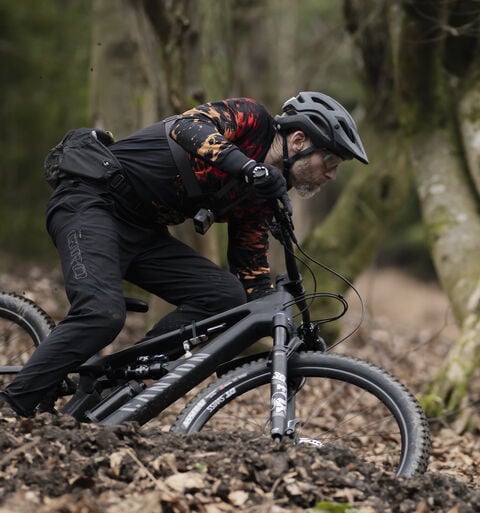
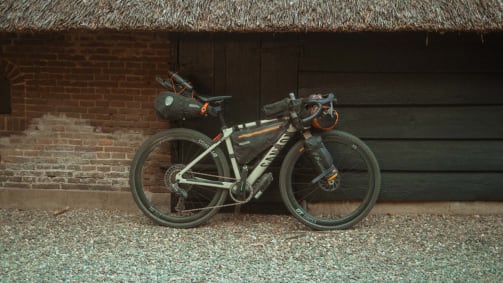
Bikepacking bikes are the ultimate freedom machines. Perfect for enabling your inner explorer or just escaping into nature for a night. But what is bikepacking, exactly? What makes a bike good for bikepacking? And which is the best bikepacking rig for you?
Contents
What is Bikepacking?
Bikepacking is a more adventurous, all-terrain take on traditional touring. It’s based around using strap or bolt-on bags to carry your gear on the bike. These are much tougher, lighter and more secure than racks and panniers that can rattle loose; all of which makes riding rough terrain, or even carrying your bike, much easier and safer.
Bikepacking events can range from epic tests of endurance, like the mountainous Tour Divide from Canada to Mexico, The Silk Road and Atlas Mountain races in Asia and Africa, or the Highland Trail 550 in Scotland. But bikepacking can also simply be a friendly try-out, just a few kilometers from home.
Many bikepackers create their own adventures by using published routes or just pedalling off and seeing where their bike takes them. Basically, the joy of bikepacking is that there are no rules or restrictions and the best bikepacking bikes won’t limit you either.

How to choose the right bike for bikepacking?
Choosing the best bikepacking bike depends heavily on where and how you want to travel. From tarmac roads and cycle paths to alpine singletrack, there's a bike for every terrain and riding style.
You don't need to limit yourself to one terrain. Canyon bikes are so versatile that they cover multiple bikepacking scenarios. However, you'll want to decide on the primary riding terrain you cover most often to find the best bikepacking bike for you.
Gravel bikes for bikepacking
Gravel bikes are the best choice for bikepacking when you mostly ride on mixed terrain – unpaved paths, gravel tracks, and the occasional strip of tarmac. They combine the efficiency of a road bike with the robustness of a mountain bike. This balance makes them great bikepacking bicycles.
The Canyon Grail is the perfect bikepacking bike if you love speed but don't want to sacrifice off-road capability. With its innovative cockpit design and ability to mount aerodynamic bags, you'll get maximum efficiency from your tours. The Grail is available in various specifications, from the Grail CF through Grail SLX to the top-tier Grail CFR.
If you're looking for the ultimate bikepacking bicycle all-rounder, the Grizl is your best choice. We've developed it specifically for unlimited adventures, offering enormous comfort even over long distances. The Grizl OG models (original models with standard handlebars) are ideal for day trips and light multi-day tours. For expeditions, the Grizl Escape series is available as an extension of the CF models, optionally with integrated lighting, suspension fork options, and even more mounting points for your bikepacking bags.
What makes these gravel bikes perfect for bikepacking? They accommodate tyres up to 50mm wide (sometimes even MTB tyres), feature numerous mounting points for your bikepacking kit, and offer a relaxed yet sporty geometry. You sit more upright than on a road bike but can pedal more efficiently than on a mountain bike. That's why gravel bikes are perfectly suited for long days in the saddle.
Not sure which gravel bike configuration is right for you? Our gravel bike buying guide explains the differences between our models, so you can ride with confidence knowing you’ve made the right choice.
Mountain bikes for bikepacking
Mountain bikes are the best choice for bikepacking when your route consists predominantly of rough singletrack, technical mountain paths, and challenging terrain. They offer maximum control, traction, and suspension comfort even with heavy loads.
The Exceed is a lightweight cross-country hardtail and is excellent for fast bikepacking adventures. It's a race-proven bike that remains agile and nimble even when fully loaded with your bikepacking gear. Its low weight and efficient 29-inch wheels make it the perfect choice for alpine bikepacking.
If you're seeking more travel and versatility, choose the Grand Canyon – the bikepacking all-rounder. It offers 120mm of front suspension, numerous mounting points for bags and accessories, plus the ability to mount a rear bike rack.
The great advantage of mountain bikes for bikepacking is that you can ride routes that would be unmanageable with other bicycles. Root-filled paths, scree fields, steep climbs with loose surfaces – you'll master all this confidently with an MTB. The wider tyres with specifically designed tread patterns provide enormous grip, traction, and comfort, especially when you're carrying heavy loads.
Touring bikes for bikepacking
Touring bikes are the best solution for bikepacking if you're primarily travelling on sealed paths, cycle ways, and occasionally on gravel tracks. They combine everyday practicality with touring capability, and sometimes come out of the box equipped with mudguards and lighting systems.
For riders looking for the same versatility with added motor support, the Pathlite:ON e-bikes deliver. They feature an upright riding position, wider tyres, rear racks, and lighting systems. Thanks to the powerful motor assistance from the Bosch Performance Line, they're particularly useful for longer tours with lots of luggage.
Road bikes for bikepacking
At first, it may seem unusual to use road bikes for bikepacking. However, they're a good choice for certain applications. For example, if your routes run primarily on tarmac – such as long-distance road tours or Alpine crossings on sealed passes – then a road bike offers unbeatable efficiency.
The Endurace road bike is perfectly suited for bikepacking. Its relaxed geometry provides a more comfortable riding position than a pure race bike, and you can fit tyres up to 35mm wide, which provides comfort even on slightly bumpy tarmac. For example, the Endurace AllRoad offers several mounting points, making it touring-ready.
What makes road bikes so attractive for certain bikepacking tours? It's simple: They're significantly faster and more efficient on tarmac than other bicycles. On long tarmac stretches like the iconic Tuscany Trail or similar classic bikepacking tours, you'll make progress much faster and with less effort on a road bike.
What makes a bikepacking bike?
Bikepacking does what it says on the tin: You pack everything on your bike and go! The amount you take is entirely up to you, as is how luxurious you want your overnight stops to be.
And while you can have an adventure on any bike, with whatever bags you can find, we’re guessing you’re here for some expert advice on what to look for in your ideal adventure ride. So, what exactly makes a bikepacking bike different from your everyday ride?

Tyres and wheels
As the point of contact between your bike and the ground, wheels and tyres make a huge difference to your bikepacking experience in terms of speed, safety and comfort.
If you’re mostly sticking to the road then fat - 30+mm - road tyres are the fastest option for efficient riding. Pick a tyre with some protection against punctures rather than choosing the lightest, pure race rubber you can find. After all, you can’t go “flat out” with a flat tire.
40-50mm gravel bike tyres provide a great balance of easy-rolling efficiency and enough grip to keep you safe and upright when you are riding over loose and rough surfaces. If you’ve got an eye on the clock, then 40mm tyres roll fast, feel fast and have an aero advantage which is why they’re standard fit on our Grail gravel race / rapid bikepacking bikes.
On the other hand, we fit a tough 45mm overland tyre on our Grizl Escape all-terrain bike and the more fun focused, Grizl OG gets a set of grippier 45mm boots. All Grizl bikes can take up to a 54mm tyre though, which makes them compatible with a lot of 29er mountain bike options for maximum off road control.
If you know you’ll be off piste on singletrack and mountain paths most of the time though, then it makes sense to go for a full MTB and get wider tyres as standard. Our Exceed and Grand Canyon bikes are equipped with fast rolling but surefooted 29 x 2.25in tyres, and will accomodate up to 29 x 2.4in rubber, for extra comfort and control.
When it comes to wheel size, bigger always rolls better and smoother, so 700c / 29in is the way to go. That’s because the basic physics means every bump in the trail is proportionately smaller. You will see 27.5in / 650b wheels on some of our smallest bikes though, which helps us keep bike fit and handling perfectly proportional.
Frame material and geometry
More advanced manufacturing technology means frame material isn’t the big issue it used to be, but each way to make a bike still has its pros and cons.
Carbon frames are the lightest and strongest choice for all our flagship bikepacking and adventure bikes. Our athletes and adventurers have proven how tough they are, time and time again, all around the world. Carbon frames can be repaired too, but you do need to be more careful about crushing and crashing them than a steel frame.
Alloy frames are the go-to choice for durable and affordable frames on all the Canyon bike ranges. They’ll handle a bit more hammer from flying rocks or tops of buses on transfer days than a carbon frame too. However, if dents are too big or are located in a high-stress area of the frame, aluminum has one drawback: you can’t repair an aluminum frame safely. When it comes to frame repair, carbon fiber has the advantage.
Don’t just get fixated on the frame material either. The weight limit of the frame and the warranty offered by the manufacturer are always the most important things to consider, especially when you’re picking a bikepacking bike that you’re going to load up and rely on for a long time.
Best gearing for bikepacking
Long days loaded bikes and steep climbs all mean lower gears are a real help when bikepacking. That’s why single - rather than road bike-style double - chainring transmissions are becoming the default choice. Most gravel group sets now team a 40-tooth chainring with a 42 or 44-tooth biggest cog at the back.
That gear range can winch you up most climbs reasonably well, but if you know you’ll regularly be crawling up really challenging pitches then look at MTB-style “Mullet” gearing. “Mullet” gearing on gravel bikes often consists of a 40T gravel chainring that’s teamed with a bigger (51 or 52-tooth) rear cog. For maximum mountain-taming ratios though, a mountain bike with a 32 tooth chainring and a 51 or 52 tooth max cog out back will let you spin up most climbs rather than struggle.

Suspension or no suspension?
Suspension forks used to be a mountain bike-only thing, but more and more gravel riders are using short-travel suspension forks now too. These gravel forks only have 30-40mm of travel, but that’s enough squish to add a lot of comfort and control when things get rough. You’ll also be amazed how much faster you can roll without getting rattled about, even on climbs. The extra control can make up for the additional weight of a suspension fork. Riding faster, and with less fatigue, is always a plus – particularly if long and wild rides are what you are after.
Both our Grail and Grizl ranges now come with Canyon X DT Swiss fork options that are totally integrated in terms of aerodynamics and handlebar control. And, of course, our Exceed and Grand Canyon MTBs come with full-control 100 and 120mm travel forks as standard equipment.
Handling and load distribution
Look around at customised bikepacking builds and you’ll see all sorts of bolt-on extension bars that give you aero speed and extra hand/cargo positions. We recognised that fact and created two specific gravel / bikepacking cockpits for our bikes.
Race-focused Grail bikes get the Double Drop system which has mounts for the seamless addition of aero extensions, GPS units and other equipment. Grizl Escape bikes get our radical Full Mounty bar, which takes the forward loop designs of popular bike packing bars and builds the design into the stem too. This gives you many more potential hand positions, keeping your upper body relaxed and your hands fresh. The Full Mounty cockpit also creates a lot more space for mounting bags (we make a dedicated one for this bar) as well as lights, GPS etc.
Multiple hand positions and a narrower, more aerodynamic ride position give gravel bikes their major advantage over MTBs. That said, you can add bolt-on extensions to your flat bars if you want.

Bikepacking bags and storage: What to use and where to put it
Bikepacking bags are what makes bikepacking different than touring. They’re lightweight, compact, tough, and make your bike easier to handle on challenging trails.
Seat packs are the core of most loading systems, as they offer some aerodynamic benefits and are a great way to carry bulky overnight kit. Handlebar rolls are good for light and bulky kit too, but don’t overload them as doing so can affect your bike’s steering and handling.
Top tube packs, small bar bags or frame packs are really useful for things you need in a hurry, such as snacks, phones and tools. Fork bags are the best place to put heavy items as their low positioning can help stabilise the bike. Fork-mounted bags are not aero though and while you can get load sleeves for Canyon RIFT gravel suspension forks, they won’t fit on MTB suspension forks.
Finally, internal (in-frame) LOAD storage compartments help you carry some of your essential equipment inside many of the latest Canyon bikepacking frames.
Most dedicated bikepacking bikes - and all Canyon bikes in this category - will have a lot of extra, bolted mounting points
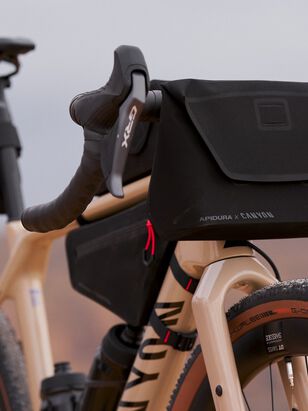
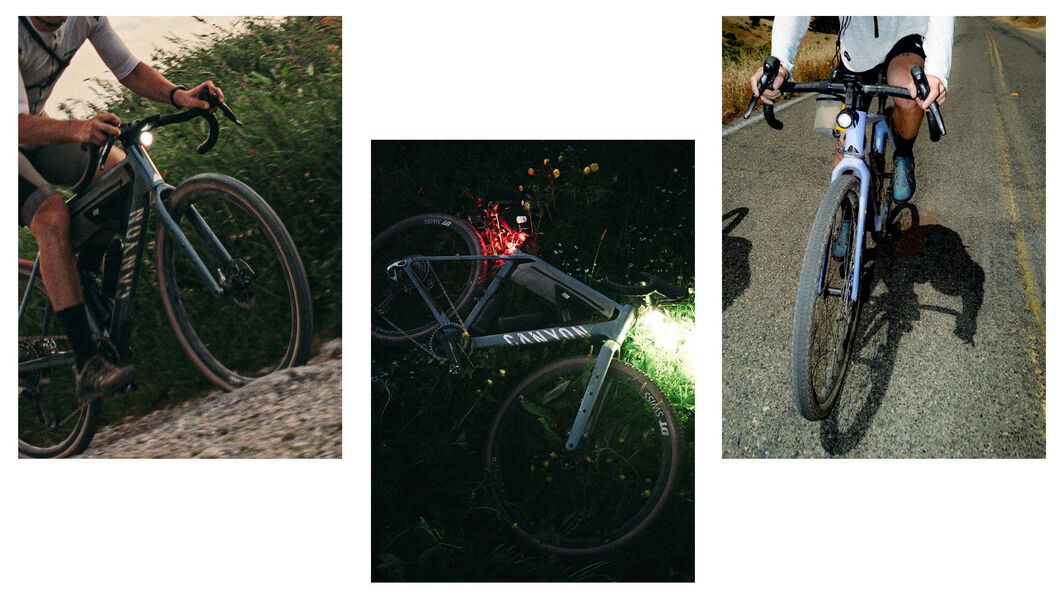
These mounts are the most secure option for bottle and cargo cages, and they’ll stop bags and straps from scratching your paintwork. That said, protecting your paint job by applying stick-on gel film or tape is always a good idea for adventures anyway.
Finally, don’t forget you can carry stuff on your own body too. A vest like our Canyon X Millet SHARP collab is a great way to keep your drink and essentials within easy reach so you can Stay Hydrated At Race Pace.
Lighting options for bikepacking: Don’t get left in the dark
Lights are a bikepacking essential if you want to carry on adventuring or just setting up camp after dark. As with handlebars, there are lots of bolt-on bike light options you can add to any bike. In terms of power, we’d recommend at least a 1000 Lumen max output for riding technical off-road trails confidently. When riding simpler tracks and at slower speeds, 500 lumens is OK.
Modern self-contained LED lights offer excellent runtime, multiple modes, and battery displays for smart power management. For endless illumination, dynamo-powered systems generate light as you pedal - though some switch off when you stop.
That’s why we developed the ECLIPS system for our latest Grizl gravel bikes. It pairs an ultra-efficient SON dynamo with powerful Lupine lights, an internal battery, and a smart BlackBox unit that stores power as you ride. You’ll still have light when stationary, and can even charge your devices via the built-in USB-C port - perfect for life off grid.
Whatever system you use, don’t forget to mount a high-visibility, red rear light to make sure you’re safe in traffic and to use as a back-up light for camping / mechanicals etc. Or take a spare torch to stop your pasta sauce looking weird.

Budget considerations for your first bikepacking bicycle
The cost of a bikepacking bicycle can vary greatly, but you don't need to spend thousands of pounds to start bikepacking – you can also experience bikepacking on a small budget. Nevertheless, it's worth considering the long-term advantages of a higher-quality bike. Different features and characteristics are available at different price points.
Entry-level bikepacking bikes
For bikepacking beginners, there are solid options in all bicycle categories in the under €1,500 price segment. Here you'll mainly find aluminium frames, mechanical groupsets, and reliable components. The following model ranges offer several bikepacking-suitable versions in this price segment:
- Gravel bikes: The aluminium Grizl models, such as the Grizl 5, are ideal entry points into gravel and bikepacking. With their balanced geometry and durable design, they’re ready for both adventure rides and everyday exploration.
- Mountain bikes: The Grand Canyon comes in several off-road versions that fit in this price bracket. All Grand Canyon variants have hydraulic disc brakes, robust aluminium frames, and mounting points for bikepacking bags.
- All-road bikes: The Endurace AllRoad blends endurance comfort with all-road versatility, making it an ideal companion for mixed-surface bikepacking.
In this price range, you’ll find reliable, well-performing components, though not the high-end parts used on premium models This means you get slightly more weight, mechanical shifting rather than electronic, and usually aluminium rather than carbon frames. For bikepacking beginners and occasional tours, this is perfectly adequate. The most important factor to consider in your purchase is that the bike functions reliably, and you feel comfortable riding it.
Mid-range bikepacking bikes
The price class between €1,500 and €3,000 is the sweet spot for ambitious bikepacking:
- Gravel bikes: In this segment, you'll find some Grail and Grizl models. They offer lightweight carbon frames, mechanical groupsets (including SRAM Apex or Shimano GRX), and solid wheelsets. These bikes are made for long distances, so you can easily ride multi-day tours. If you're torn between the two gravel bikes, our Grail vs. Grizl comparison will help with your decision.
- Mountain bikes: As lightweight carbon hardtails, the base models of the Exceed excel because they master both trails and long distances. Models with reliable Shimano SLX specification and Fox suspension forks bring everything you need for challenging terrain.
In this price range, you’ll find plenty of capable bikepacking bikes offering a lighter carbon frame for improved comfort, smoother and longer-lasting shifting from higher-quality groupsets, and more efficient, durable wheelsets for long days in the saddle. These advantages add up to a noticeably better riding experience on long tours. If you regularly plan bikepacking tours and take your hobby seriously, bikes from this price class are a wise investment.
High-end performance bikepacking bikes
In the premium segment from €3,000, you get bikepacking bicycles with the best materials, lightest components, and most innovative technologies. These bikes are designed for demanding tours, competitions, and extreme adventures. For unlimited adventures, these are some of your options:
- Some Grizl CF ESC models offer integrated ECLIPS lighting, electronic shifting, and the innovative Full Mounty cockpit – a complete package for self-sufficient bikepacking. Models with RIFT suspension forks offer even more comfort in rough terrain and further blur the line to mountain bikes.
- For race-oriented bikepacking, the Grail CF SLX with SRAM Force XPLR is our recommendation. The Grail CFR, for example, with SRAM RED XPLR AXS and Zipp 303 wheelsets is a genuine lightweight (from 7.5 kilograms) and thus one of the fastest gravel bikes available.
For the premium price, you get the highest material quality, minimal weight, electronic groupsets with perfect precision, and integrated solutions like lighting and aerodynamic features. If you participate in bikepacking races, ride ultra-long distances, or simply want the best equipment, these bikepacking bikes are worth every pound.
Remember, this rule applies even in this segment: the most expensive bike doesn't automatically make you a better bikepacker. Experience, long-distance training, and proper route planning are at least equally important.
Ready to go: The one rule of the best bikepacking adventures
Hopefully everything you’ve read in this blog helps give you an insight into the bikes and equipment that will give you the bikepacking adventure you want.
What we’ve learnt from years of heading out into the wild - or just the local woods - on our bikes is that the best bits of an adventure are often the unplanned ones. The wrong turns that lead to amazing new places. The solved problems that reveal talents and tenacity you never knew you had. The pushed climbs, exhausted wobbles into bushes and ‘hangry’ hunger tantrums that you hate at the time but will have you howling with laughter later.
So whether you’re riding alone, finding new friends on the trail, or solidifying lifelong relationships through shared adventure, remember one thing: You’ll be fine no matter which kit or bike you choose. Just be open to all the opportunities bikepacking can bring and truly embrace the escape!
Discover our Gravel Bikes
Did this article help?
Thank you for your feedback
-
 About the author
About the authorGuy Kesteven
Meet Guy Kesteven, our author, a northern UK veteran who has been writing about off road bikes, tech and adventures for almost thirty years








